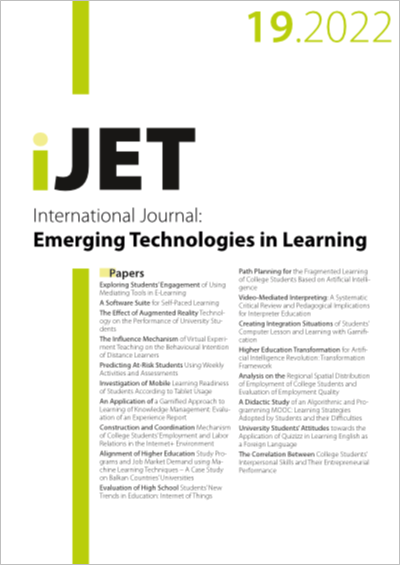Evaluation of High School Students’ New Trends in Education: Internet of Things
DOI:
https://doi.org/10.3991/ijet.v17i19.32183Keywords:
High school students, Internet of Things, new directions in educationAbstract
The purpose of this research is to evaluate high school students’ perceptions of the Internet of Things in the evaluation of new trends in education. The research was designed in accordance with the qualitative research method. The study group of the research consists of 83 high school students studying in Almaty, Kazakhstan, in the 2021–2022 academic year. The study group was given a 4-week Internet of Things online awareness training. After the training, interviews were held with high school students. A Semi-Structured Interview Form prepared by the researchers was used as a data collection tool in the interviews. As a result of the research, the knowledge level of high school students on the concept of the Internet of Things was evaluated as very low before the online awareness training and as high after the online awareness training. High school students, on the Internet of Things online education, while they had an indecisive attitude before the training, these attitudes changed positively after the training. High school students participating in the research stated that they found the achievements of the Internet of Things awareness training to be high. In addition, with the IoT awareness training given to the students, the students stated that they had a positive opinion about the use of IoT applications in education. In order to ensure the integration of IoT applications into education, it is necessary to provide necessary for instructors, prepare school infrastructures and make curriculum arrangements.
Keywords: High school students, Internet of Things, new directions in education
Downloads
Published
How to Cite
Issue
Section
License
Copyright (c) 2022 Aigul Uspabayeva, Aigul Sattarova, Natalya Mirza , Marzia Kubeeva, Zhanatayev Kazakbay Abdualievich, Galiya Rysbayeva

This work is licensed under a Creative Commons Attribution 4.0 International License.


